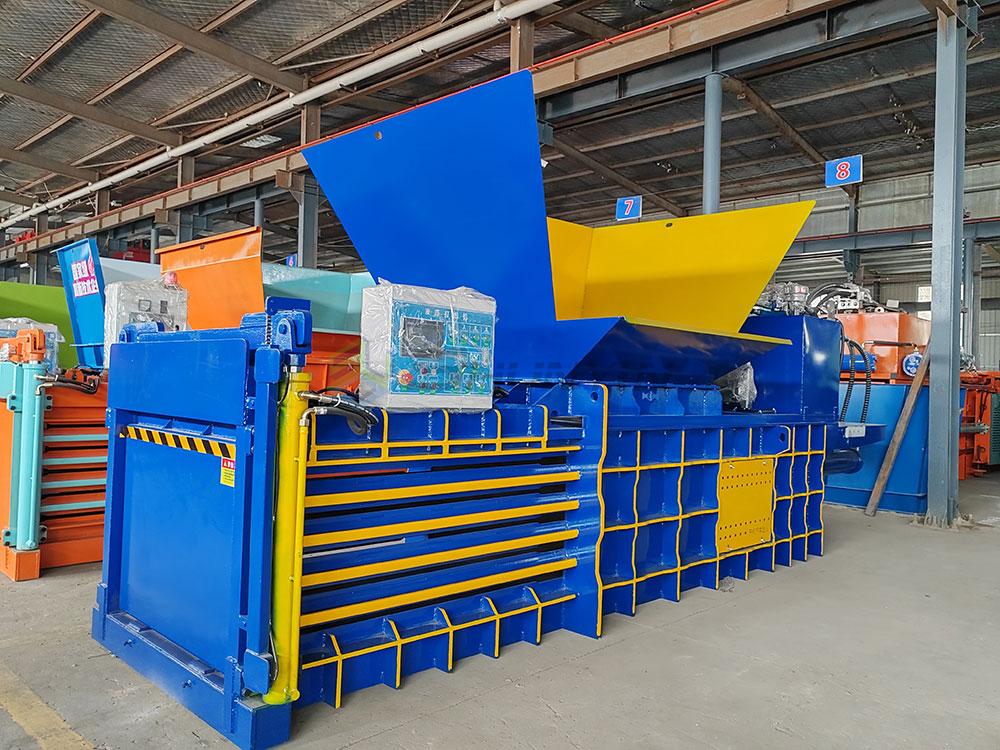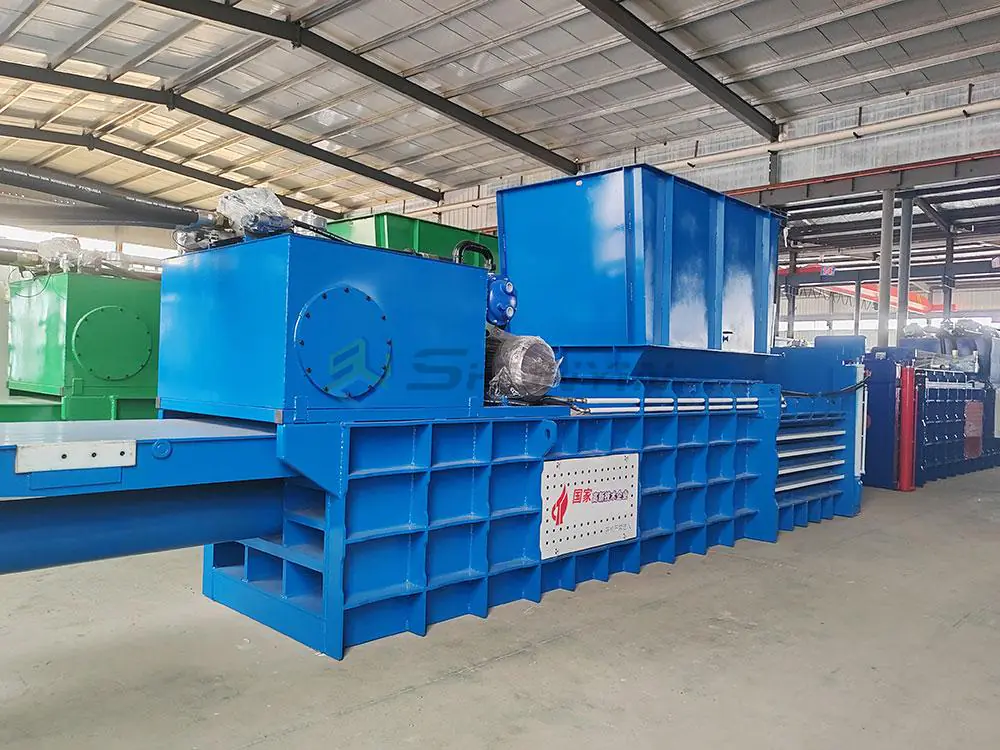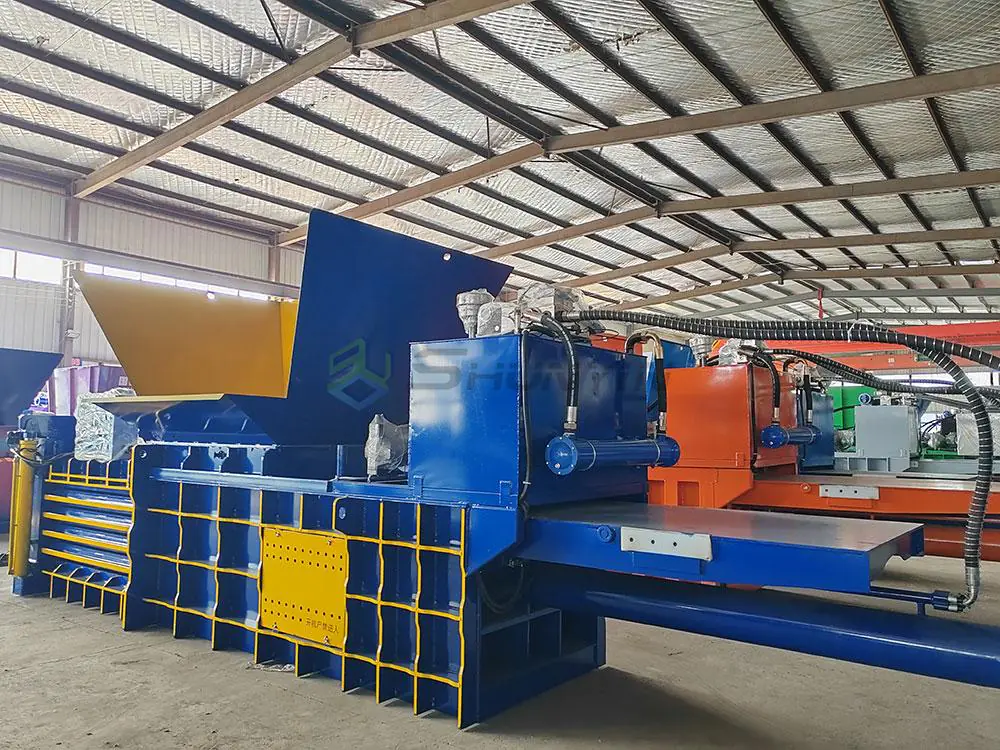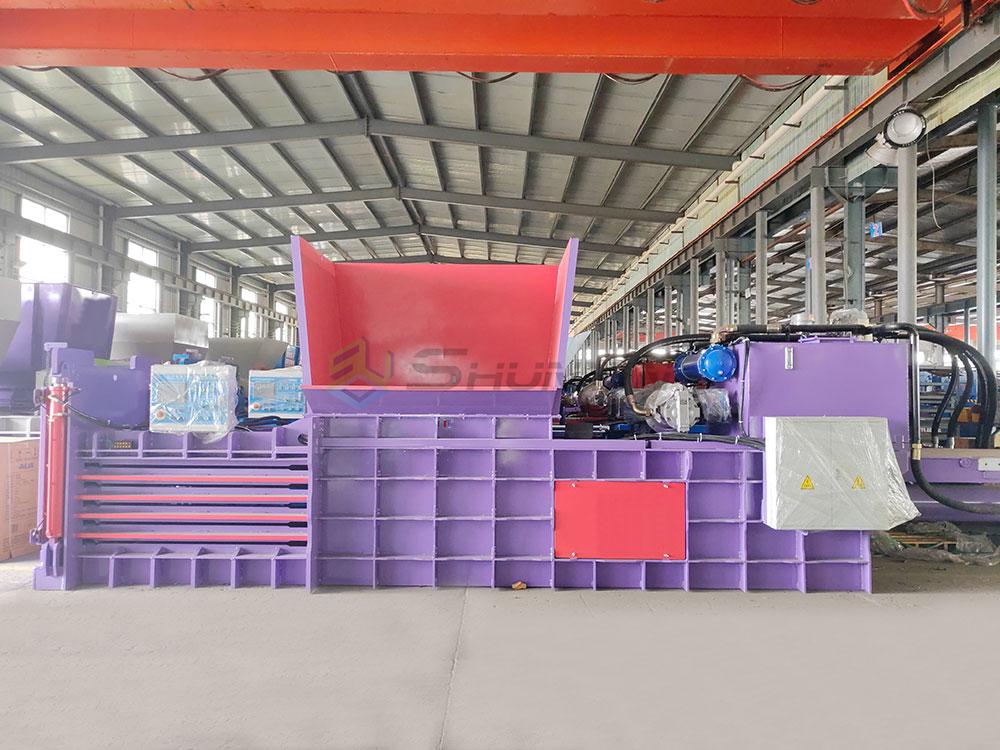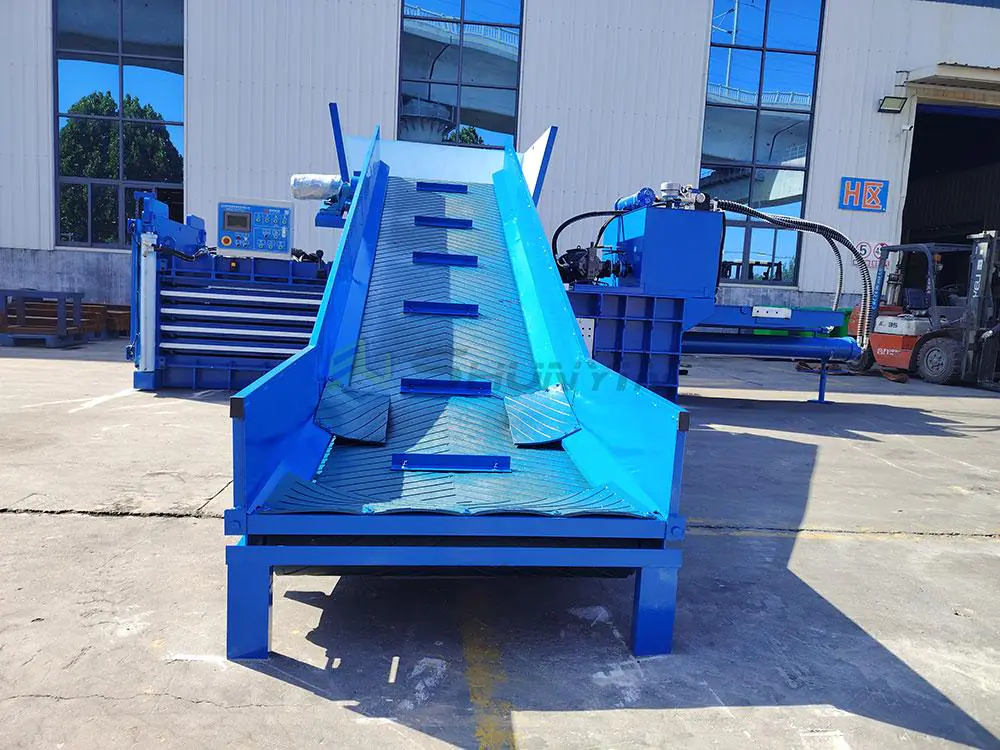Mountains of cardboard waste choke storage areas daily. Operational costs balloon without proper volume reduction. Vertical balers offer affordable compaction solutions for smaller spaces.
Vertical cardboard balers compress OCC waste efficiently through top-down hydraulic pressure. Our cost-effective models transform loose corrugated material into 300-500kg bales while minimizing storage space and transport expenses.

Cardboard recycling shouldn’t break your budget. Discover how our low-cost solutions balance performance with affordability. Let’s answer your pressing questions now.
How Much Does a Cardboard Baler Cost?
Pricing confusion prevents many recyclers from purchasing equipment. Unexpected fees multiply installation costs. Knowing exact price ranges simplifies budgeting.
Entry-level vertical balers start around $8,000. Industrial models with automation features range up to $22,000. Our most popular mid-range unit delivers robust performance under $13,500 with essential automation.

Breaking Down Total Ownership Costs
Purchasing price represents just one expense component. Consider lifetime costs before choosing equipment.
Total Cost Analysis Table
| Expense Category | Entry-Level ($8K) | Mid-Range ($13.5K) | Premium ($22K) |
|---|---|---|---|
| Machine Cost | $8,000 | $13,500 | $22,000 |
| Annual Maintenance | $850 | $700 | $450 |
| Power Consumption | $480/year | $390/year | $310/year |
| Replacement Parts | $320/year | $240/year | $170/year |
Hidden costs impact budgets significantly. Shipping and installation often add 10-15% extra charges. Our factory-direct pricing eliminates importer markups. Quality construction reduces long-term expenses. Thinner steel models require frequent plate replacements. We use 12mm armor plates standard. Automation features lower staff requirements. Several Australian customers report labor savings offsetting our premium models within 18 months. Maintenance contracts prevent surprise costs. We offer pro-rated service packages with all units.
Verify local regulations. Some areas require special permits for hydraulic equipment installations1. Explore financing options at Contact Us
. For exact quotes, message 0086 13505379893 directly.
What Determines the Best Cardboard Baler?
Universal solutions don’t exist in waste management. Supermarket needs differ from e-commerce warehouses. Strategic selection prevents underperformance.
The best baler matches your specific output volume and space constraints. Consider daily throughput, bale dimensions, and compression cycle times. Our vertical models process 1-6 tons/hour with precise density control.

Critical Selection Criteria Simplified
Avoid decision paralysis with structured analysis. Prioritize three core factors.
Performance Comparison Matrix
| Model Size | Daily Capacity | Bale Dimensions | Hydraulic Power | Ideal For |
|---|---|---|---|---|
| SY-30V | 1-2 tons | 110×80 cm | 30-ton | Small Retail Stores |
| SY-55V (Most Popular) | 3-4 tons | 120×90 cm | 55-ton | Distribution Centers |
| SY-85V | 5-6 tons | 150×100 cm | 85-ton | Recycling Facilities |
Density requirements affect equipment choices. Shipping logistics demand tighter bales than local processing. We adjust ram pressure profiles to meet density targets. Floor space matters immensely in urban settings. Vertical balers require minimal footprint – most fit within 25m². Our angled loading designs simplify cramped placements. Material prep impacts speed significantly. Pre-shredded cardboard compresses faster but requires extra equipment. Test samples determine compatibility with your workflow.
Safety systems prevent costly incidents. Our balers feature dual palm controls and auto-eject mechanisms. Discuss bale handling requirements first. Many overlook ejection space requirements. Send facility photos to [email protected] for layout suggestions.
Baler vs Compactor: Key Differences Explained?
Misunderstanding equipment capabilities leads to wrong purchases. Similar purposes but different mechanics confuse buyers. Clear distinctions optimize investments.
Balers compress waste into bound blocks for transport. Compactors crush mixed trash into loose containers for local disposal. Cardboard specialists need balers to create stackable, resalable bales.

Technical Disparities Impacting Operations
Fundamental design differences dictate performance profiles.
Functional Distinction Table
| Feature | Cardboard Baler | Trash Compactor |
|---|---|---|
| Output Form | Tightly bound bales | Compressed loose waste |
| Material Handling | Clean streams only | Mixed waste accepted |
| Density Improvement | 10:1 ratio | 4:1 ratio |
| Resale Value | Creates salable product | Disposal cost only |
| Maintenance Cost | Lower (no residue) | Higher (contamination) |
Revenue potential separates these systems. Well-made bales become profit centers – compactors only cut disposal fees. Equipment longevity differs significantly. Compactors degrade faster due to food contamination which our balers avoid. Noise pollution levels vary substantially. Hydraulic systems operate quieter than compactors’ trash-crushing mechanics. This helps comply with urban noise regulations.
Workflow integration matters. Balers require pre-sorting, while compactors handle unsorted waste. Consider material purity2 first. For pure OCC streams, balers deliver superior ROI. Calculate potential savings: WhatsApp 0086 13505379893 for our ROI worksheet.
How Long Can Quality Cardboard Balers Last?
Premature equipment failure disrupts recycling operations frequently. Unplanned downtime costs thousands daily. Smart purchasing prevents these emergencies.
Properly maintained balers function 10-15 years. Our units reach 20+ years with scheduled servicing. Key components like hydraulic cylinders carry 5-year warranties.

Maximizing Equipment Lifespan Tactically
Extensive field data reveals maintenance patterns. Proactive care outperforms reactive fixes.
Longevity Factor Analysis
| Longevity Factor | Low Impact | Moderate Impact | High Impact |
|---|---|---|---|
| Seal Replacement | Annual ($150) | – | – |
| Hydraulic Fluid | Quarterly testing | – | – |
| Ram Guide Wear | – | Biannual inspection | – |
| Structural Stress | – | – | Monthly visual checks |
| Control System Updates | – | – | Every 3 years |
Material quality dictates longevity. Inferior steels fatigue faster under daily compression cycles. Our frames use stress-tested SS400 steel throughout. Hydraulic maintenance preserves performance. Quarterly oil analysis prevents acid buildup in reservoirs. We provide fluid kits matching regional climate conditions. Operational habits cause unnoticed damage. Overloading chambers stresses frame welds prematurely. Our pressure sensors indicate optimal fill levels.
Wear components need scheduled replacement. Ram seals typically last 18 months with high-volume use. Buy genuine spares – counterfeits cause secondary damage. Document machine history diligently for warranty claims. Get our maintenance checklist: email [email protected] with subject "Baler Lifespan Guide".
Conclusion
Low-cost vertical balers deliver efficient cardboard compaction with flexible throughput capabilities and decade-plus longevity when properly maintained.


